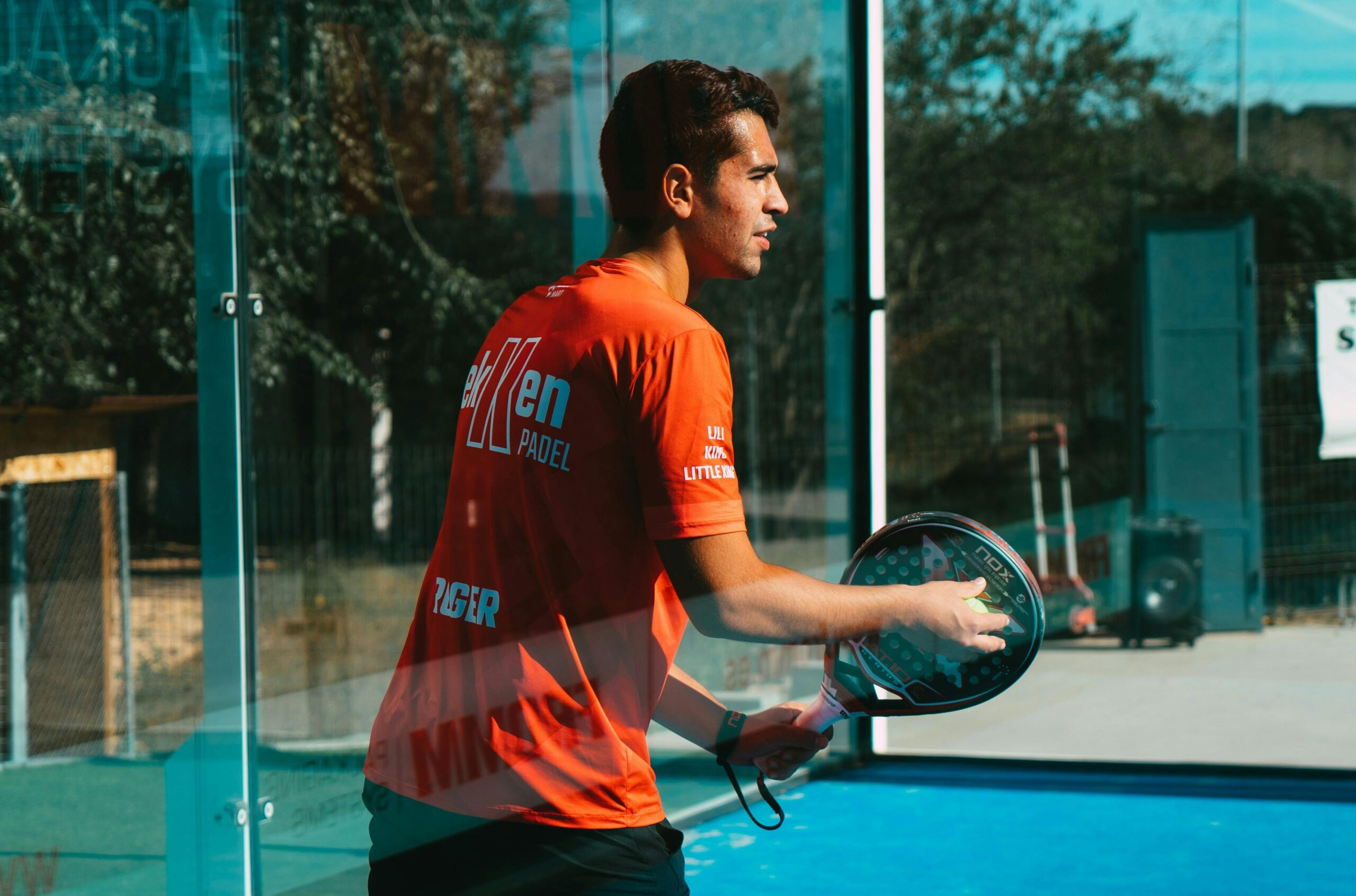Ready to dive into the world of padel? This sport, which is becoming increasingly popular, has simple rules and a fun format that hooks you from the very first match. Here’s a complete guide with everything you need to know to start, from how to grip the racket to the rules and key points of the game.
What do you need to know to play padel?
Do you have questions like: “Can you play with tennis balls?”, “Can the ball bounce twice?” or “Can I step out of the court during a point?” Keep reading. We’ll address all those questions as we introduce you to one of the most exciting and fastest-growing sports in the world.
How to properly hold a padel racket
The grip is fundamental in padel, and the most commonly used by both beginners and professionals is the continental grip. This grip is versatile and will allow you to perform most shots comfortably and effectively. Based on our experience, we always recommend new players start with the continental grip before trying other grips like the eastern grip, which can be more useful for certain overhead shots.
Can you play padel with tennis balls?
The short answer is: don’t do it. Padel balls and tennis balls have important differences, especially in pressure and bounce. Playing with tennis balls can negatively affect your racket, as padel rackets are designed to absorb the specific impact of padel balls. Therefore, we always recommend using the correct equipment to keep your racket in good condition.
Dimensions and structure of a padel court
A padel court is 20 meters long and 10 meters wide, with glass walls that allow the ball to bounce, adding a unique dynamic to the game. The back wall height is 4 meters, while the side walls are 3 meters tall. All of this creates a distinct playing experience compared to other racket sports.
How do you score in padel?
The scoring system in padel is similar to that of tennis: 0, 15, 30, 40, and then game. If there is a tie at 40, you can choose between the traditional “advantage” format or the “golden point,” where the team that wins that point takes the game. Matches are played as the best of three sets, meaning that to win the match, you must win two sets.
Key rules to start playing padel
- Ball bounce: The ball must bounce on the ground before hitting any wall or fence, except when playing a volley (hitting the ball before it bounces).
- The serve: The serve must be made below waist height and diagonally into the opposite service box. If the ball hits the side fence after the first bounce, it is considered a fault. Each player has two attempts to make a valid serve.
- Positioning: Padel is played in doubles, so coordination and positioning with your partner are key. The two basic positions are: defense (behind the service line) and attack (close to the net). Being in a middle position is usually ineffective unless you are transitioning between attack and defense.
Do you need a referee to play padel?
Unless you’re playing in an official competition, you don’t need a referee for your matches. Playing padel is primarily a social and enjoyable activity, although a bit of competitiveness always adds excitement.
Basic equipment to start playing padel
To start playing padel, you need two essential items:
- Padel racket: Our recommendation for beginners is a round-shaped racket, as it offers a larger sweet spot and makes it easier to control your shots. It’s not necessary to start with the best racket on the market; something simple and in good condition will be more than enough for your first games.
- Padel shoes: It’s crucial to have specific padel footwear, as other types of shoes (like soccer cleats) do not offer the right grip. Shoes with CLAY or ALLCourt soles are ideal for preventing slips and reducing the risk of injuries.
The basic shots to master padel
If you’re a beginner, there are two shots you absolutely need to learn:
- Forehand: It’s the basic shot par excellence. Rotate your dominant shoulder back and hit the ball head-on, preferably with a flat impact. As you progress, you can experiment with different effects like slice or topspin.
- Backhand: Although it tends to be more challenging for beginners, the backhand is key in padel, as it’s frequently used during the game. With practice, you’ll become a master of this shot.
Ready to enjoy padel!
Now that you know the essentials of how to play padel, all that’s left is to grab your racket and hit the court. At Padeltie, we love sharing our passion for this sport, so keep exploring our content to improve your technique and stay up to date on the latest news in the padel world.

